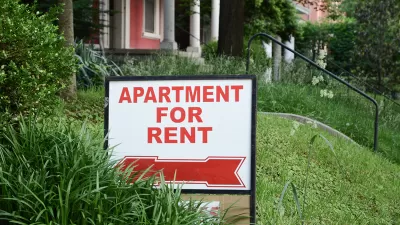There’s a reason land ownership is a matter of public record—but at the moment the records we have aren’t actually doing the job.

As we continue to grapple with the high cost of housing for renters and would-be homebuyers, knowledge of who owns properties can be a valuable tool for developing strategies to promote affordability. Much attention has been paid to the role of institutional investors in the single family housing market and the impact of COVID-19 on so-called mom and pop landlords—shorthand for non-corporate owners—and their interest in and ability to continue their businesses. Common to both storylines: an implicit recognition that who owns a property can dictate what happens to it.
Ownership scale and physical proximity of the owner’s address to his or her portfolio are important indicators of opportunities to engage on property- and local-level concerns. For those reaching out to owners to partner on preserving affordability of rental properties, for example, working with a cohort of owners or managers controlling a dozen properties each will have far more impact than working with a group of owners responsible for only one or two properties. A community concerned about a property with repeat code violations might want to know about other properties under the same owner to keep close tabs on those homes as well. And a jurisdiction’s response to violations may differ between a non-local, large-scale owner using neglect as a business strategy and an individual owner with a second property nearby that has fallen into disrepair because of cash flow problems or lack of business acumen.
Publicly accessible records of ownership are the key to being able to develop effective policies and programs. But it’s not easy. Nobody checks a box anywhere indicating a particular type of ownership, and many investors actively try to hide their activities.
Why Land Ownership Records Are Public
One of the earliest public records of land ownership is the Domesday Book, which cataloged landholding in England in 1086. While it was designed to provide William the Conqueror with an assessment of the country’s wealth in order to levy taxes, it also served to provide landowners with unimpeachable proof of their claims to their land. As land was sold, passed down, leased, subdivided, aggregated, encumbered, and otherwise transacted over time, clear chain of title open for all to see—that is, in the public record—was in the interests of individual owners and society at large. Publicly recording all of these things meant that competing claims to land could be resolved by reviewing the history, and fraud would be minimized.
The practice of public recordation in the United States is as old as the Plymouth Colony, which had its first recorded deed in 1627. Massachusetts’s 1640 law to prevent fraudulent conveyances is considered the archetype for all state recording acts. In addition to “avoyding all fraudulent conveyances,” ...
FULL STORY: Unmasking the Property Owners

Alabama: Trump Terminates Settlements for Black Communities Harmed By Raw Sewage
Trump deemed the landmark civil rights agreement “illegal DEI and environmental justice policy.”

Study: Maui’s Plan to Convert Vacation Rentals to Long-Term Housing Could Cause Nearly $1 Billion Economic Loss
The plan would reduce visitor accommodation by 25% resulting in 1,900 jobs lost.

Planetizen Federal Action Tracker
A weekly monitor of how Trump’s orders and actions are impacting planners and planning in America.

Federal Homelessness Agency Places Entire Staff on Leave
The U.S. Interagency Council on Homelessness is the only federal agency dedicated to preventing and ending homelessness.

Restoring Northern India’s Himalayan ‘Water Temples’
Thousands of centuries-old buildings protect the region’s natural springs and serve as community wells and gathering places.

Milwaukee to Double Bike Share Stations
Bublr Bikes, one of the nation’s most successful, will add 500 new e-bikes to its system.
Urban Design for Planners 1: Software Tools
This six-course series explores essential urban design concepts using open source software and equips planners with the tools they need to participate fully in the urban design process.
Planning for Universal Design
Learn the tools for implementing Universal Design in planning regulations.
Caltrans
Smith Gee Studio
Institute for Housing and Urban Development Studies (IHS)
City of Grandview
Harvard GSD Executive Education
Toledo-Lucas County Plan Commissions
Salt Lake City
NYU Wagner Graduate School of Public Service





























